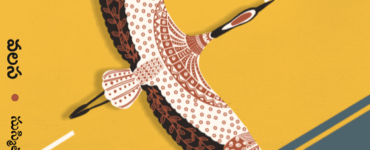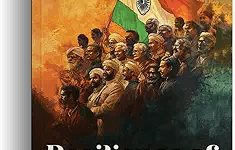The Asiatic Society under the patronage of Warren Hastings undertook translations of the Gita (1785) with a foreword by him and also of Hitopadesa (1787) and Manusmriti (1796). If Macaulay’s infamous statement was to the effect that a shelf-load of Western Literature was worth more than all the works India has to offer, Hastings, equally brazenly, asserted that translation was a mode of “steering and controlling the Indians within the framework of their own ways of thought.” Here is translation used for promoting the colonialist agenda: ideological enslavement of a subject nation. The emphasis is on the inequality of the translation relationship. Gayatri Chakravorty Spivak, Tejaswini Niranjana and others have argued that translation was effectively used in the past as an instrument of colonial domination, a means of depriving the colonized peoples of a voice. For in the colonial model, one culture dominated the other subservient cultures and translation reinforced that power hierarchy. Notwithstanding the immense contribution of C P Brown to the promotion of Telugu literature, his translation of Vemana cannot be said to have freed itself from occasional traces of the colonialist strain in its vocabulary. In the postcolonial phase, it is argued that translation ensures the survival of a text. Thus translation effectively becomes the after-life of a text, a new “original” in another language. This view of translation reinforces the importance of translation as an act both of inter-cultural and inter-temporal communication.
In the universities the curriculum prescribed Ibsen and Strindberg, Tolstoy and Balzac, Dostoevsky and Thomas Mann in the English course, without anyone ever alerting students to the fact that as translated texts these books could perhaps be approached differently. So is the case with those writers through whom literary modernism came to be institutionalized in the English-speaking world, like Proust, Kafka and Camus. Not even the translator’s role as a bridge for “carrying across” values between cultures has been discussed, though this was a topic as old as Terence, the 2nd Century BC Roman adapter of Greek comedies.
A.K. Ramanujan, the celebrated translator of U R Ananthamurthy’s Samskara, chose the following lines from “The Dedication of the Aeneid” by Dryden for the epigraph to his Hymns for the Drowning. Dryden belonged to the great age of the imitation of the Classics and he reveals his attitude to translation thus: “to steer betwixt the two extremes of paraphrase and literal translation; to keep as near my author as I could, without losing all his graces . . . Such of these as would retain their elegance in our tongue, I have endeavor’d to graff on it; but most of them are of necessity to be lost, because they will not shine in any way but their own. … taking all the materials of this divine author, I have endeavor’d to make Virgil speak such English as he would himself have spoken. . . in this present age.”
One implication of Dryden’s utterance is that perfect translation is a mirage or that verbatim equivalence of the original in translation is a myth. This argument is akin to what has been said about history. Does it unravel truth in its entirety? The celebrated statement on history is that it presents only an approximation to the truth, possible for a generation. So is the case with translation. Eliot’s famous observation is that the English version of Euripides’ Medea of 431 BC does not belong to English literature, nor does it belong to Greek, though in some sense it belongs to both and that it combines Greek brevity with Swinburne’s liquid haze.
“Cultural amphibians” as we are, as Edward Said describes postcolonial people, our attitude towards translation reflects a spirit of biculturality. The translator keeps in view the sensibilities and linguistic and cultural traditions of the target language, as also those of the source language. Again, he takes into consideration his target audience and their sensibilities, that is, the context. N. Venugopal translated the Chinese novel Song of Youth by the Chinese revolutionary Yang Mo in 1985. It presents a gripping account of the brave struggle of young men and women fighting for the liberation of the semi-feudal and semi-colonial Chinese society. Published in 1958, it created a furore among readers throughout China and eventually became a best seller. It depicts the unremitting struggle of the patriotic students during the momentous period from the September 18th incident in 1931 to the December 9th Movement in 1935. It is a period novel which wove into its fabric student life and romance and themes of betrayal, patriotism, and armed struggle against foreign aggression. Venugopal’s Telugu translation of the novel, Udayageethika, came at the height of the radical student movement in Andhra Pradesh five decades later, and thus the SL text and the TL text and their sociological focus were sufficiently separated in time and space. Venugopal’s target audience was part of a class struggle and they would not be able to relate to the situation of a foreign invasion. Thus there was a marked difference in the context with regard to theme and the readership. There was a change in the value system too between the Chinese then and the Telugu speaking people fifty years later. Then there are the market pressures before the publisher which in a sense weigh with the translator too. The Telugu market would not allow a writer to publish a novel of that size. Indeed, if Venugopal had done a true translation, it would have become unmanageable in length and not relevant to the context. Thus we notice the incongruence between the original and the translation and it is dictated by socio-historical and cultural reasons. Texts are products of their times and their meanings are consequently constrained by both an orientation to the values of that period and their place in the translator’s imagination. According to the sociolinguistic approach to translation, the social context defines what is and is not translatable and what is or is not acceptable through selection, filtering, and even censorship. According to this perspective, a translator is inevitably the product of his or her society His own sociocultural background is present in everything he translates. This approach is associated with the School of Tel Aviv and with figures such as Even Zohar and Guideon Toury.
Kamisamrat Viswanadha Satyanarayana’s Veyipadgalu is a complex narrative running to 999 pages and containing lengthy passages of discourse on varnaashramadharma. The novel has been hailed as a “vaignanika bhavishya purana”. Its translation appeared in 2015 under the title Thousand Hoods and it was done under the editorial eye of C. Subba Rao with Aruna Vyas, Uppuluri Atreya Sarma, Vaidehi Sridhar, and S. Narayana Swamy translating it. This translation was done under the supervision of well-known scholars Kovela Suprasannacharya and S. Lakshmana Murthy taking probably into consideration Nannaya’s stylistic flourish visible in Veyipadagalu and its episodic range (Naanaruchiraardhasuktinidhi Nannaya Bhattu). The English translation was brought out under the aegis of Viswanadha Sahithi Peetham. Because it involved translation by several hands, stylistically and in terms of the philosophical and metaphysical vocabulary employed in the translation there is a visible non-uniformity, which falls short of replicating in translation the tautness of the structure of the Source Language Text. This deficiency is pronouncedly felt in the case of the translation of Veypadagalu because Viswanadha was a classicist and the reader’s expectation of getting a feel of the grandeur of the discourse and style of this celebrated source text remains unfulfilled. One is reminded of Dryden’s dictum (quoted earlier) of not losing Virgil’s graces and at the same time endeavouring to adopt that style of narrative to “this present age”. But nevertheless it must be admitted that this translation is a great endeavour undertaken with ardent devotion to making Viswanadha literature available to a larger audience.
Velcheru Narayana Rao, a pravasa Andhra, is a well-known translator who will be remembered long for his Classical Telugu Poetry: An Anthology, 2002, which he brought out with David Shulman as his joint editor. It offers a translation of, with an introduction to and critical commentary on, classical Telugu poets from the 11th century to 19th century. Keechaka Vruttantam from Tikkana and Pothana’s Vamana Avatara visleshana are some of the episodes he translated into Telugu in a somewhat unequal translation. A touch of occasional colloquialism in the translation interferes with the narrative grandeur of the SL texts, again reminding us of Dryden. Velcheru Narayana Rao translated 100 padams of the 15th century Telugu poet Taallapaaka Anamaachaarya as God on the Hill (2005). Let us take as an example the padam: “enta maatramunan/ evvaru talacina/ anta maatrame/ neevuu / antarantaramulenchi chuda pindante nippati anntlu” and its translation, “You’re just about as much as any one imagines you to be …” which reads flat on the page. Many of these padams are a fine example of mythopoesis and their fusion of word and music is hard to recapture in translation. Take for example, “Adivo alladivo Srihari vasam, padivelaseshula padagalamayamuu”. Translation is not solely or simply a semantic act but a cultural act as well that must make some attempt to communicate a sense of the sound, cadence, rhythm, and imaginative reach of the SL text. Viswanadha’s famous utterance was: “Nannaya bhasha sankranta runumbu theerpagalade”. Transacting with that bhasha sankanti, with that richness of language and lore, is not an easy task for the translator. The translator’s role, it was recognized, was by no means a passive and mechanical one, since in ancient times it was compared to that of an artist. The main ground seemed to be the concept of parallel creation found in critics such as Cicero. It may be of interest to mention here that the translator was compared to a musician or actor and this idea goes back at least to Samuel Johnson’s remark about Alexander Pope playing Homer on a flageolet, while Homer himself used a bassoon.
Among the hazards the translator faces is one relating to dialectal expressions which distill the cultural essence and ethnicity of a region. We may cite as an example
“kandisunny” in Kodavatiganti’s story “Taatayya”. In Palagummi’s “A Village Official’s Last Will and Testament”, the narrator entertains a grouse against his self-willed daughter for breaking the taboo of “eduru menarikam”, which is a family custom among families of certain castes. In “Polayya”, the reactionary brahmin expresses his frustration with an imprecation: “Naa shraaddham, naa pindaakoodu,” which perfectly conveys a particular caste register but creates a problem for the translator. From this angle, maybe Indian vernacular fiction centred on urban experience is easier to manage in translation. Translators always risk spill-over of source-language idiom and usage into the target-language translation. On the other hand, spill-overs have imported useful source-language calques and loanwords that have enriched the target languages. Indeed, translators have helped substantially to shape the languages into which they have translated. Time was when the translator was described in terms of violent images of “appropriation”, “penetration”, or “possession”. The postcolonial approach sees more creativity in the translation process and visualizes the linguistic exchange as dialogic, as a process that happens in a space that belongs to neither source nor target language absolutely.
But these references also raise the question of fidelity in translation, that is, the urge “to keep as near my author as I could.” The translator’s goal is to provide purposeful reading experience, bridging two languages, two cultures, and two minds. K N Rao so translated the title of Madhurantakam Rajaram’s short story “Aedarilo Koyila” that an apt English idiomatic equivalent was found for Madhurantakam’s title: “The Homing Pigeon.” The voice of the boy, a non-resident Indian, who visits his grandparents after lapse of years, appears like “koyila kantharavam,” for the grandparents, sweet, sonorous, and stirring up the roots of memory and desire. But ironically what is a gain in the koyila metaphor is a loss in the pigeon metaphor, though its aptness as translation and its equivalence cannot be denied. In the pigeon metaphor the emphasis is on the grandson and his longing for roots, while in the koyila metaphor the sense of revival of a long lost relationship may be a predominant motif. It may also be a case of the reader response and his choice between these two perspectives. Like the author the translator too could, by the title, suggest a possible perspective for the reader. The point to remember here is that the translator surrenders himself to the text and not to its writer to be able to satisfactorily communicate not only a distinctive socio-cultural world but also a perspective in another language. Is the translator here inflecting the original author’s viewpoint or manoeuvring the reader’s perspective?
In 1990, the two eminent Translation Studies scholars Susan Bassnett and André Lefevere highlighted what they termed as the ‘cultural turn’ in translation. Their view was that neither the word, nor the text, but the culture becomes the operational “unit” of translation. What these theorists were trying to stress was the translator’s need to inhabit the milieu of the SL Text. The translator, according to them, needs to become a part of the text’s moment and milieu. This is so especially because the SL text comes to the reader “filtered” through the “translator’s lens”. Then another question relates to the relationship between the language of the source text and that of the translated text. Is it possible to have a translated version which is recognizably English, but acceptably vernacular? Our creative writers Raja Rao (Kanthapura) and Vikram Seth (A Suitable Boy) have shown the way. Our efforts at translation are bound to strain the limits of the English language, leading to the vernacularization of the English language.
One of the issues translation raises relates to the identity of the translator, an issue that is largely ignored. The presence at large of the “original”’ author obviously overshadows the identity of the translator making him invisible. An important reason for the effacement of the translator’s name is the publisher of translated texts. He tends to relegate the translator’s name to an obscure corner of the book. The moralistic approach towards translation introduces ST authors as the legitimate owner of their textual creations. In this view the translator is seen as a person who trespasses the exclusive realm of the original writers, trying to share in his power and property. That is why most of the times literalism and preserving formal correspondence in translation are equated to faithfulness. This situation is an obvious instance of discourse capitalism which has been vehemently criticized by the poststructuralists and postcolonialists who have strongly questioned the legitimacy of the source author’s ownership of the discourse he creates and the asymmetrical power relation between the original author and the translator. Looked at from this angle, translation bypasses the question of equivalence per se. There have been many metaphors used in the past by theorists to define translation: as treachery, as parasite, as bridge, and as a predatory or cannibalistic attempt. All translation is interpretation and that gives the translators the freedom to inflect the originals in ways unintended by the original authors. Is translation then something of a creation? Walter Benjamin’s “Task of the Translator”’ seems to suggest that translation fails when it aims at making the communication of the meaning of words paramount. According to the “theory of sense” perspective, it is meaning which must be translated, not language. “A poem can be translated only by another poem. There is no such thing as a literal translation,” said A.K. Ramanujan. In a translated story too much of literalness makes it a shadow of the original. Too much of literalness might also give rise to the impression whether the translation is a self-conscious effort to efface the translator’s voice in favour of that of the SL text. The translator is a reader who enters the text he reads from the perspective of his moment and milieu and thus he is an interpreter as well.
Gurazada’s Telugu play “Kanyasulkam” was first performed in 1892, and published in 1897. This enormously popular play was made into a successful film (directed by P. Pullaiah with N. T. Rama Rao and Savitri in the lead roles) in 1955. Gurazada Apparao exposes the duplicity, hypocrisy and social inequalities in the Indian society in this most popular play which continues to enjoy great patronage on the stage. The English Preface to the first edition of the play by Gurazada states as follows: “… literature cannot have a higher function than to show up such practices and give currency to a high standard of moral ideas. Until reading habits prevail among masses, one must look only to the stage to exert such healthy influence.” The anti-nautch movement and the widow remarriage question, the conflict between English education and traditional learning, the deceit and skulduggery practised in the institutions of judiciary, administration and education, the entrenched orthodoxies of caste, custom and superstition, the use and abuse of reform figure prominently in the play which places before us immortal character sketches in Gireesam, Madhuravani, Ramappa pantulu, Agnihotraavadhaanulu, Lubdhaavadhaanulu, and Buchchamma. The dialectal expressions in the play place a formidable task before the translator. Vijayasree and Vijay Kumar’s translation attracted several scathing reviews including in Andhra Jyothi. The charges against the translation broadly are that (a) the dialectal nuances were not handled suitably by the translators, (b) translations of such works ought to be done by eminent Telugu scholars in collaboration with English / American translators whose authority over English and its dialects would enable them to suggest appropriate equivalents.
What is possible is a close adaptation rather than verbatim translation, as the translators may say. “Readability and fidelity to the original were our guiding principles. We wanted to retain and highlight the comic exuberance of the text at all costs. The younger generation is wary of the very word “classic”. But we are sure once they start reading the text, they will find it unputdownable till the end.” The problems the translators encountered were too many – caste and gender specific usages, dialectical variations, quotations and misquotations from many modern and ancient sources, Indian and western, abuse words and so on. At the same time, Vijayasree and Vijay Kumar mentioned their objective: “We make it very clear, implicitly, that it is a translation of an Indian, Telugu text”. The translators had to be inventive, as for example in the coinage of expressions like “broomance” for “cheepuru katta sringaaram”.
But let us see how the play Kanyasulkam itself provides for creative adaptation by an act of cultural substitution which a translator inventively introduces in the translation of texts of this kind. Gurazada immortalizes Milton’s famous utterance in Paradise Lost, Book I by a clever act of cultural substitution: “Of Man’s first disobedience and the fruit of that mango tree, sing Venkatesa, my very good boy”. The satirical force of the substitution marks it as a cultural expression symbolizing an implicit subaltern rejection / revolt.
Volga’s Vimuktha has been translated into English by Vijaya Kumar under the title The Liberation of Sita. The Hindu reviewer of this translation says, “I have no idea what musicality the original Telugu has, but in translation, the book’s prose is choppy, with a too-rudimentary and staccato rhythm.” The reviewer judges this translation by the yardstick of how the writing appeals to the reader in English without comparing the elements of the original with those of the translated text. His analysis is based upon what he notices to be a pronounced absence in the target language text: the absence of a humming, breathing cadence that delights in the English it uses. This kind of an assessment raises another issue, which I would put in the inimitable words of Susan Bassnett: “To attempt to impose the value system of SL (source language) culture onto the TL culture is dangerous ground, and the translator should not be tempted by the school that pretends to determine the original intentions of an author on the basis of a self-contained text. The translator cannot be the author of the SL text, but as the author of the TL text has a clear moral responsibility to the TL readers.” (Translation Studies (1980), 3rd edition, 2002: 32).
All translations, it must be remembered, are a form of negotiation, between cultures, ideologies, texts and politics. Translations, as George Steiner tells us, are not a matter of fidelity or betrayal of the so called original text. They draw attention to the process rather than the product. In a typical postmodernist stance Jorge Luis Borges says, “The original is unfaithful to the translation” whereby he elevates the status of the target language text.
Moisture Trapped in a Stone: An Anthology of Modern Telugu Short Stories Translated from the Telugu by K N Rao, 2018 is an anthology of 28 short stories covering some of the most well-known writers in Telugu like Madhurantakam Rajaram, Vasundhara, Kalipatnam Rama Rao, Dwivedula Visalakshi, Ravi Sastry, Volga, and others. The title Moisture Trapped in a Stone is a translation of Madhurantakam Rajaram’s “Raathilo thema”. K N Rao, the author of this anthology, is by profession a botanist with a passion for Shakespeare and his pedigree and a penchant for the short story and the essay. Moisture Trapped in a Stone is one among the few competent translations where the nuances of English meet and match those of the Telugu original. Sometimes literal translation of the titles is unavoidable and necessary too. But where the context or the tone and tenor of the original narrative demanded it, K N Rao transcended literality.
In this anthology Kalipatnam Rama Rao’s “Nirvaakaalu” which carries overtones of subtleties of deception is translated into English as “Management” which does not adequately reflect the implications of the original. Adages like “ships end up as carts and carts as ships” in this short story have no English idiomatic equivalents and such transliterations are a striving to make English acquire the cadence of Telugu. Indian writing in English and translations into English are part of a process of “pollination”, a kind of planting of the English language in the textual soil of Telugu, to describe it in the words of Meenakshi Mukherjee’s Perishable Empire. In a telephonic interview, K N Rao said that rather than translate literally, he adopted the route of entering the “soul” of the short story for rendering it in English. That is what is contained in Newmark’s distinction between communicative translation and semantic translation. Translation (like adaptation) is not a rendering of some fixed meaning to be copied or paraphrased or reproduced. It is an engagement with the original text that makes us see the text in different ways (Walter Benjamin).
Cannot the translator but be a “faithful bigamist”, as Barbara Johnson calls him? The relationship between the text-that-is and the text-to-be should be such that a translated story is “a gloriously independent self, resplendent in the unique voice with which it renders an already living story.” Too much of literality will make it a strong shadow of the original. Is it necessary for the translator to efface his voice in translation in favour of the original? If the English translation has to efface its voice in translation in favour of the original, then the English version denies the reader the cadences and the delight of listening to the English voice at the same time as invoking the voice of the original. It is by a subtle blend of the flavour of the original and the aroma of English that a spirit of biculturality emerges. It must also be borne in mind that translation in the Indian context brings to the fore the issue of the complex reality of the internalization of a foreign culture by the civilization of India, which has absorbed English without being overwhelmed by it.
With the spurt of translations into English from the nineties, a growing body of English translations of Telugu literature has emerged on the scene. D. Kesava Rao is one of our distinguished translators and promoters of this activity. He has translated a novel, some short stories and two collections of poems as also a number of poems published in Indian Literature. Without forsaking the Englishness of the translation, Kesava Rao distils in his translation the essential spirit of the source language text. Thus, in a sense, in his translation in English he ironically frees himself from “the tongue in English chains.” Darbhasayanam Srinivasacharya is a Telugu poet who has to his credit six volumes of poetry. Green Fingers and Other Poems is Kesava Rao’s translation of Darbhasayanam’s poems culled from these six volumes.
Darbhasayanam’s preponderant use of agricultural imagery, root and shoot symbolism, at times sprinkled with anatomical imagery, readily catches the attention of the reader. Recollections as a tourist or a pilgrim, reflections on nature and nurture, nostalgia for the past leading to a sudden and bewildering recognition of a sense of estrangement (“I am an alien to my own grain”), the serenity of nature reminding man of his alienness leading to the recognition of the need for an empathy with nature are some of the fairly broad range of themes that Darbhasayanam Srinivasacharya touches upon. Green Fingers is a collection that delineates the very experience of the evanescence of life by making use of the imagery of recreation, regeneration, and reproduction. For the translator, the source text serves merely as a raw ingredient exploited by him to create his own product which pursues its own purpose. “Translation” is just a pretext: a label that the translator tags on his product to meet his objectives. At the same time, it is a confession, an admission, that a source text has been used in creating this product. In this act of re-situation of the original, Kesava Rao succeeds in retaining in his translation the flavour of the original avoiding target culture dominance. What does this flavoured writing, but nevertheless in English, suggest? Does it, in the celebrated language of Borges, indicate that the original is unfaithful to the translation? Or, more appropriately, in the biculturality its textual soil reveals does it hint at writing back to the empire?
The short stories in the K N Rao anthology and the D Kesava Rao selections reveal a range of themes, narrative / poetic techniques, and metaphors employed by contemporary Telugu writers whose achievement cannot be belittled as the following poem does:
కలలయ్యె కళలు కనగను
వెలకట్టిన చూడలేము వెనుకటి పటిమన్
కొలతల కందని కృషి తో
తలపెట్టిరి నాటి తరము తరమే పొగడన్
*









A good article on translations. My sincere compliments to the writer. Publishing such articles now and then will go a long way in providing stimulus to many a translator. I also congratulate Saaranga team for giving importance to translations.